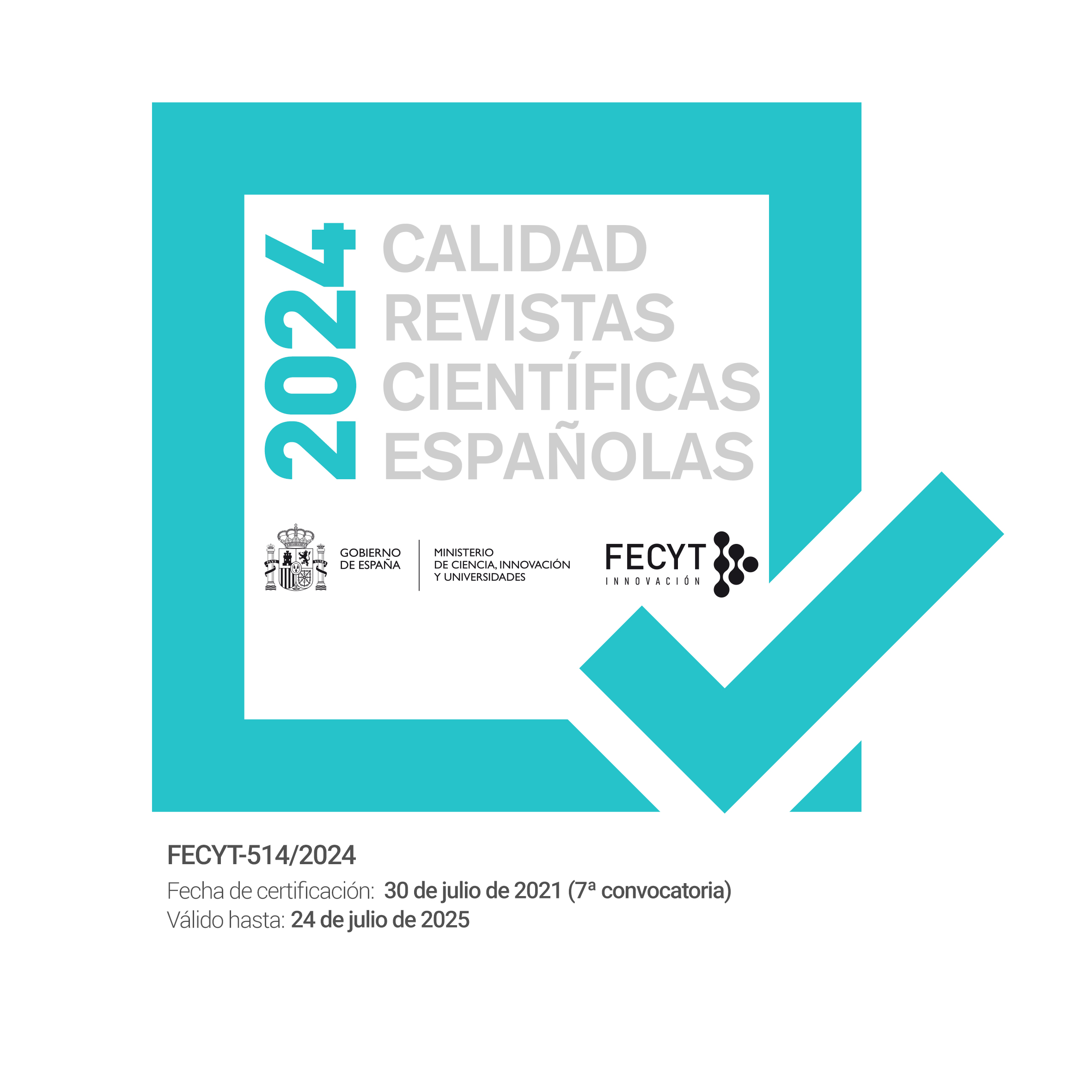‘WHATEVER DOESN’T KILL YOU SIMPLY MAKES YOU STRANGER’: FEAR IN THE CHARACTER OF THE JOKER IN THE DARK KNIGHT AND JOKER
DOI:
https://doi.org/10.12795/REN.2022.i26.02Keywords:
The Joker, Fear, The Dark Knight, Joker, Pop-culture, FilmAbstract
The Joker is one of the most frightening comic book characters ever created and has, as a result, been the subject of numerous adaptations to film and television. This article analyses the portrayals of the Joker by actors Heath Ledger and Joaquin Phoenix in The Dark Knight (2008) and Joker (2019), respectively, and the differences in their representations of the Joker in relation to fear. It also explores how the two films serve as allegorical representations of public fears present at the time of the films’ creation, and how these fears are either embodied in or experienced by each films’ Joker. Fear elements utilized by each film’s Joker character are also analysed, i.e., acts of terrorism, use of make-up, and laughter. Moreover, the article’s treatment of the Joker reveals a character who is a victim both of public fears and of his own traumatic past—fearful experiences which come to shape the Joker’s violent persona. The article’s comparative analysis makes use of psychological and sociological explanations of fear and its characteristics.
Downloads
References
AAKVAAG, Helen Flood, et al. “Broken and Guilty Since It Happened: A Population Study of Trauma-Related Shame and Guilt After Violence and Sexual Abuse.” Journal of Affective Disorders, vol. 204, 2016, pp. 16-23.
AKHTAR, Salman, editor. Fear: A Dark Shadow Across Our Life Span. Online-ausg. Karnac, 2014.
---. “Fear, Phobia, and Cowardice.” Akhtar, Fear, pp. 3-34.
AZZARELLO, Brian, and Lee Bermejo. Joker. DC Comics, 2008.
BALCONI, Michela. “In the Face of Fear: Neuropsychological Contributions and Empirical Evidences.” Gervaise, Psychology of Fear, pp. 31-51.
BASSIL-MOROZOW, Helena Victor. The Trickster in Contemporary Film. Routledge, 2012.
BATTAGLIA, Judy E., et al. “Intersectional Feminisms and Sexual Violence in the Era of Me Too, Trump, and Kavanaugh.” Women & Language, vol. 42, no. 1, 2019, pp. 133-43.
BAXTER, Lee. “Batman: The Dark Knight: The Joker’s Pursuit of Justice in an Unjust World.” Fear Within Melting Boundaries, edited by Lee Baxter and Paula Braescu, BRILL; ProQuest, 2020, pp. 89-97.
BIRKENSTEIN, Jeff, et al. Reframing 911: Film, Popular Culture and the “War on Terror.” Continuum, 2010.
BROOKER, Will. Batman Unmasked: Analyzing a Cultural Icon. Continuum, 2005.
---. Hunting the Dark Knight: Twenty-First Century Batman. I.B. Tauris; Distributed in the United States by Palgrave MacMillan, 2012.
BROOKS, David A. “Do Some Men Just Want to Watch the World Burn? Narratives of Fear and the War on Terror in the Dark Knight Trilogy.” Liberated Arts: A Journal for Undergraduate Research, vol. 2, no. 1, 2016, pp. 1-5.
BURTON, Tim, director. Batman. Performance by Michael Keaton, et al., Warner Bros. Entertainment, Inc, 1989.
CAMP, Mary E., et al. “The Joker: A Dark Night for Depictions of Mental Illness.” Academic psychiatry: The Journal of the American Association of Directors of Psychiatric Residency Training and the Association for Academic Psychiatry, vol. 34, no. 2, 2010, pp. 145–49.
CANINI, Mikko. “Horror and the Politics of Fear.” Canini, The Domination of Fear, pp. 203-14.
---, editor. The Domination of Fear. Rodopi, 2010.
COX, Damian, and Michael P. Levine. Thinking Through Film: Doing Philosophy, Watching Movies. Wiley-Blackwell, 2012.
DEBONA, Guerric. “The Canon and Cultural Studies: Culture and Anarchy in Gotham City.” Journal of Film and Video, vol. 49, no. 1/2, 1997, pp. 52-65.
ETEZADY, M. Hossein. “Fear Across the Life Span.” Akhtar, Fear, pp. 193-220.
FINKELHOR, David, et al. “Poly-Victimization: A Neglected Component in Child Victimization.” Child Abuse & Neglect, vol. 31, no. 1, 2007, pp. 7-26.
FRADLEY, Martin. “What Do You Believe In? Film Scholarship and the Cultural Politics of the Dark Knight Franchise.” Film Quarterly, vol. 66, no. 3, 2013, pp. 15-27.
FROMM, Erich. The Anatomy of Human Destructiveness. Jonathan Cape, 1974.
FULU, Emma, et al. “Pathways Between Childhood Trauma, Intimate Partner Violence, and Harsh Parenting: Findings from the UN Multi-Country Study on Men and Violence in Asia and the Pacific.” The Lancet Global Health, vol. 5, no. 5, 2017, e512-e522.
GERVAISE, Allen D., editor. Psychology of Fear: New Research. Nova Science Publishers, Inc, 2012.
GIROUX, Henry A. “White Nationalism, Armed Culture and State Violence in the Age of Donald Trump.” Philosophy & Social Criticism, vol. 43, no. 9, 2017, pp. 887-910.
HILL, Shona. “Getting Medieval: Bodies of Fear, Serial Killers and Se7en.” Canini, The Domination of Fear, pp. 53-76.
HOBERMAN, J. Film After Film: Or, What Became of 21st-Century Cinema? Verso, 2013.
KELLNER, Douglas. Cinema Wars: Hollywood Film and Politics in the Bush-Cheney Era. Wiley-Blackwell, 2010.
KOLENIC, Anthony J. “Madness in the Making: Creating and Denying Narratives from Virginia Tech to Gotham City.” The Journal of Popular Culture, vol. 42, no. 6, 2009, pp. 1023-39.
LANGLEY, Travis. Batman and Psychology: A Dark and Stormy Knight. John Wiley & Sons, 2012.
LENI, Paul, director. The Man Who Laughs. Performance by Mary Philbin, et al., Universal Pictures, 1928.
LEWIS, Randolph. “The Dark Knight of the American Empire.” Jump Cut: A Review of Contemporary Media, vol. 51, Spring, 2009.
LOWE, Sandra. “Character Analysis of Batman and the Joker.” SSRN Electronic Journal, 2009, doi:10.2139/ssrn.2005155.
MARTINSON, Leslie H., director. Batman: The Movie. Performance by Adam West, et al., Twentieth Century Fox, 1966.
McGOWAN, Todd. “The Exceptional Darkness of The Dark Knight.” Jump Cut: A Review of Contemporary Media, vol. 51, Spring, 2009.
MOORE, Alan, et al. Batman: The Killing Joke. DC Comics, 1988.
NICHOLS, Michael. “‘I Think You and I Are Destined to Do This Forever’: A Reading of the Batman/Joker Comic and Film Tradition Through the Combat Myth.” The Journal of Religion and Popular Culture, vol. 23, no. 2, 2011, pp. 236-50.
NOLAN, Christopher, director. Batman Begins. Performance by Christian Bale, et al., Warner Bros. Entertainment, Inc, 2005.
---, director. The Dark Knight. Performance by Christian Bale, et al., Warner Bros. Entertainment, Inc, 2008.
PHILLIPS, Todd, director. Joker. Performance by Joaquin Phoenix, et al., Warner Bros. Entertainment Inc., 2019.
PRINCE, Stephen. Firestorm: American Film in the Age of Terrorism. Columbia University Press, 2009.
PULIDO, Laura, et al. “Environmental Deregulation, Spectacular Racism, and White Nationalism in the Trump Era.” Annals of the American Association of Geographers, vol. 109, no. 2, 2019, pp. 520-32.
RODRIGUEZ, Mario. “Physiognomy and Freakery: The Joker on Film.” Americana: The Journal of American Popular Culture, 1900 to Present, vol. 13, no. 2, 2014.
VELARDI, A., et al. “Fear and Anxiety in Psychiatric Disorders, Cognitive-Behavioral Concepts and Treatments.” Gervaise, Psychology of Fear, pp. 113-51.
VIZIN, Gabriella, et al. “Shame, Trauma, Temperament and Psychopathology: Construct Validity of the Experience of Shame Scale.” Psychiatry Research, vol. 246, 2016, pp. 62-69.
WEISS, Elisabeth M., et al. “Potential Markers of Aggressive Behavior: The Fear of Other Persons’ Laughter and Its Overlaps with Mental Disorders.” PloS one, vol. 7, no. 5, 2012, e38088. Doi: 10.1371/journal.pone.0038088.
WHITE, Mark D., and Robert Arp. Batman and Philosophy: The Dark Knight of the Soul. John Wiley & Sons, 2008.
YOUNG, Dannagal G. Irony and Outrage: The Polarized Landscape of Rage, Fear, and Laughter in the United States. Oxford University Press, 2020.















